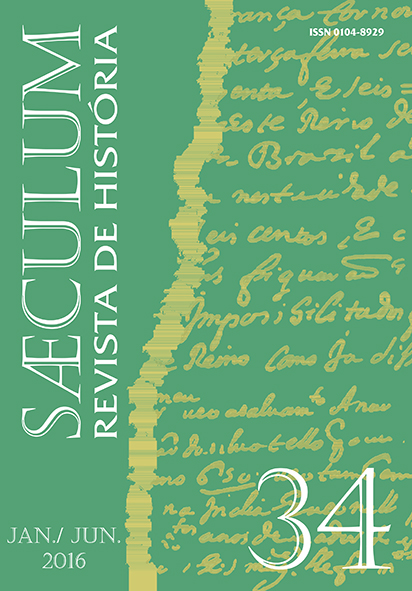AS SIBILAS E A PINTURA DE FALSA ARQUITETURA DA CAPELA DE NOSSO SENHOR DO BONFIM: SINGULARIDADE PERSUASÓRIA NA DIAMANTINA DO SÉCULO XVIII
Palavras-chave:
História ColonialResumo
Resumo: As Sibilas e a Pintura de Falsa Arquitetura da Capela de Nosso Senhor do Bonfim: singularidade persuasória na Diamantina do Século XVIII No Arraial do Tijuco, atual cidade de Diamantina, em Minas Gerais existe uma requintada pintura de quadratura trazida pelo pintor bracarense José Soares de Araújo no século XVIII. No Arraial, este pintor exerceu múltiplas funções, dentre elas a de professor de pintura. Dentre as pinturas atribuídas a seus discípulos, encontram-se as figurações das sibilas em um afresco na Capela de Nosso Senhor do Bonfim e em panos sibilísticos usados para cobrir os altares colaterais dos templos na semana da paixão. A figuração das sibilas do Tijuco, única deste gênero conhecida na colônia portuguesa da América, está sempre entre estruturas de falsa arquitetura, seja nos afrescos, seja nos panos sibilísticos. A sua fonte iconográfica ainda não foi identificada quer na literatura, quer nas gravuras que circulavam nas Minas Gerais de então. Este trabalho, na busca da identificação da iconografia das sibilas representadas no Tijuco, faz uma aproximação por meio de pesquisa na literatura, nas figurações existentes das sibilas cristianizadas em Portugal e da imaginária estampada a partir do século XVII. Quadratura e sibilas fazem na Capela de Nosso Senhor do Bonfim um quadro persuasivo singular ao vincularem duas linguagens supostamente anacrônicas entre si com o objetivo essencial de suadir o observador: a ampliação dos espaços na falsa arquitetura se eterniza no sibilar dos oráculos das profetisas. Palvras-chave: Sibilas; quadratura; persuasão. The Sibyls and the False Architectural Painting of Nosso Senhor do Bonfim’s Chapel: the unique way of persuasion in Diamantina in the 18th Century. In Arraial do Tijuco, present city of Diamantina, in Minas Gerais there is a fine quadrature painting brought by Braga painter José Soares de Araújo in the eighteenth century. In Arraial, this painter played multiple roles, including being a painting teacher. Among the paintings attributed to his disciples, are the figurations of sibyls in a fresco in the Nosso Senhor do Bonfim’s Chapel and Sybil’s’ curtains used to cover the side altars of the temples in the Passion Week. The figuration of the sibyls of Tijuco, the only one of its kind known in the Portuguese colony in America, is always among false architectural structures, whether in the frescoes, whether in Sibyls’ curtains. Its iconographic source has not been identified either in literature or in the engravings circulating in Minas Gerais back then. This paper aims by identifying the iconography of Sibyls represented in Tijuco, through research in the literature, in theological texts, the existing figurations of Sibyls Christianized in Portugal and engraving from the seventeenth century. Quadrature and Sibyls make the Nosso Senhor do Bonfim’s Chapel a unique persuasive picture when linking two kinds of speeches supposedly anachronistic among themselves with the essential objective of persuading the observer: the amplifying of the space with the false architecture becomes eternal in the Sibyl’s oracles. Keywords: Sibyls, quadrature, persuasion.Downloads
Não há dados estatísticos.
Downloads
Publicado
2016-08-03
Como Citar
ORLANDO MAGNANI, M. C. A. AS SIBILAS E A PINTURA DE FALSA ARQUITETURA DA CAPELA DE NOSSO SENHOR DO BONFIM: SINGULARIDADE PERSUASÓRIA NA DIAMANTINA DO SÉCULO XVIII. Sæculum - Revista de História, [S. l.], n. 34, p. 87–103, 2016. Disponível em: https://periodicos.ufpb.br/index.php/srh/article/view/27344. Acesso em: 2 abr. 2025.
Edição
Seção
Dossiê













